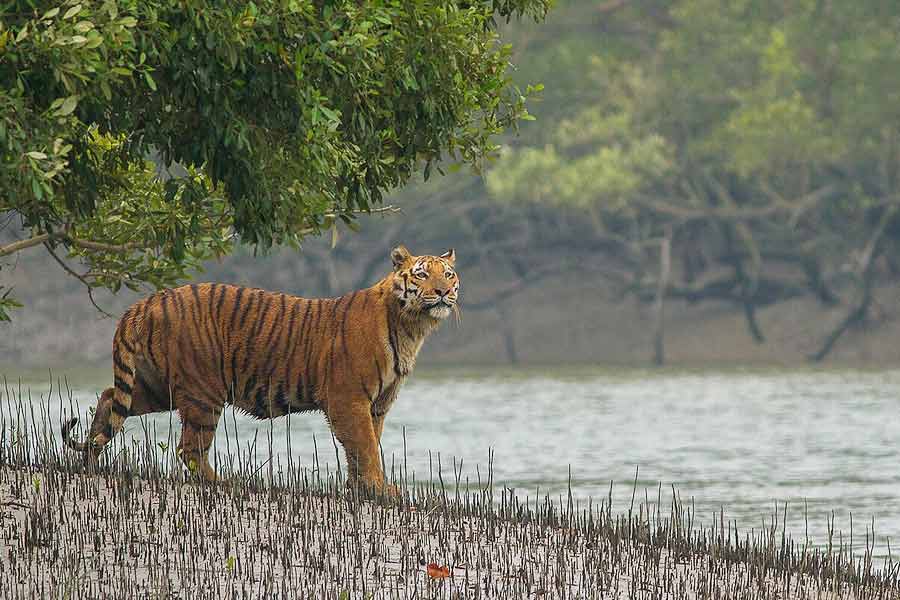 |
| Shiva Balak Misra holds one of the fossil samples he had brought home. Picture by Kumar Prithvi |
New Delhi/Lucknow, Sept. 18: A pioneering Indian scientist who gave up a career in the West to build a village school in India has had the world’s oldest fossils of multi-celled animals named after him.
The 565 million-year-old fossils will be called Fractofusus misrai after geologist Shiva Balak Misra, who had discovered them in 1967 while studying in Canada.
Misra had spotted the imprints of the ancient soft-bodied, jelly-like creatures at a place called Mistaken Point in Newfoundland after other students had turned down the opportunity to explore a remote and hostile terrain.
“They looked like impressions of leaves on mud,” said Misra, who now lives in Lucknow.
The fossils, key to mapping the transition from single-celled life forms to multi-celled ones, brought Misra instant fame. Yet he returned to India three years later to set up a school in his village, Kunaura, about 18km from Lucknow.
“There was no school in my village, and I remember the hardship,” Misra, who is in his early seventies, told The Telegraph.
Two years after he established the Bharatiya Gramin Vidyalaya with his own savings, however, he was forced to return to geology. “My money was exhausted and I needed a job,” he said.
Misra joined the Madhya Pradesh government as a geologist, then moved to Kumaon University where he taught and researched until his retirement in 1999. His wife Nirmala continues to run the school where she is the principal.
The fossils, however, remained unnamed for 40 years though Mistaken Point was declared a protected area and Canadian geoscientists began efforts to get it declared a Unesco world heritage site.
Palaeontologists were unsure whether the fossils were remains of plants or animals. Now international scientific opinion has veered towards Misra’s original theory that the fossils represent the earliest multi-celled animals.
The new name was announced by geologists Guy Narbonne from Canada and Jim Gehling from Australia at a ceremony in the Newfoundland city of Portugal Cove South, where Misra lived during his days as a student of Memorial University. The Indian couldn’t make it to the function.
“Your name appears as the discoverer of the Mistaken Point fossils.… (It) will be seen by thousands of people every summer,” Narbonne read out from an email he had sent Misra.
“You should feel quite pleased at the huge role you played in discovering this world-famous fossil site. I hope you view this as a suitable recognition of your important and pioneering work.”
The Indian, who received the email around 2.30 this afternoon, said: “I’m overwhelmed by the recognition.”
Misra said the “turning point” of his life came in June 1967 after he had quit his job with the ONGC to go to Canada and study.
“It (the discovery) was a risky job: the terrain was difficult. But I thought I would either do it or return to my country.”
The fossils represent creatures that lived during the Pre-Cambrian era, when organisms were single-celled until about 600 million years ago when the first multi-celled life forms emerged.
It was succeeded by the Cambrian era 540 million years ago, which witnessed an explosion of large life forms and the emergence of hard-bodied creatures.
“In the evolution of life, Nature engaged in experiments. Some life forms didn’t survive. The Mistaken Point fossils represent such life forms without descendants,” said Mukund Sharma, a palaeontologist at the Birbal Sahni Institute of Palaeobotany, Lucknow.











